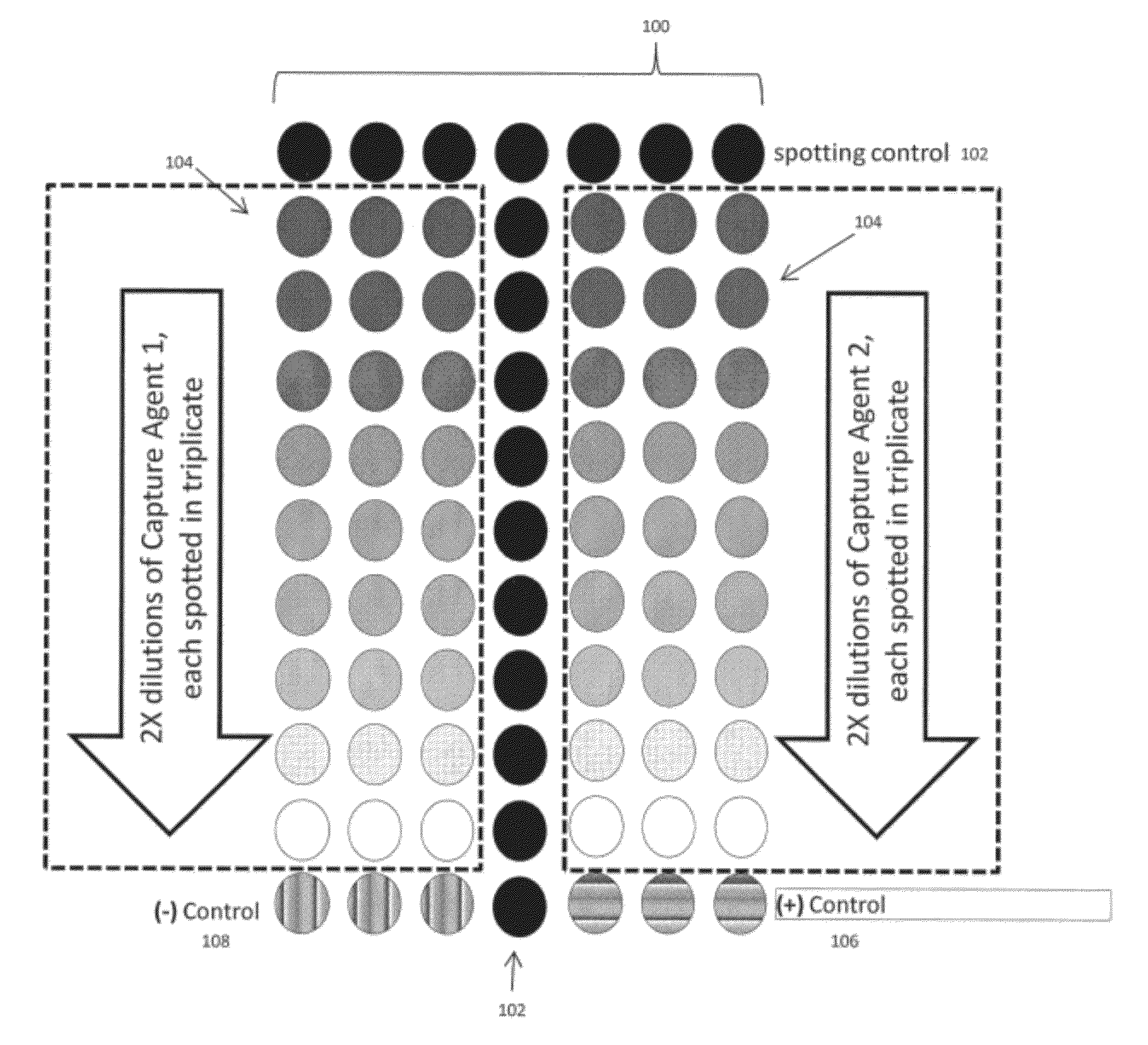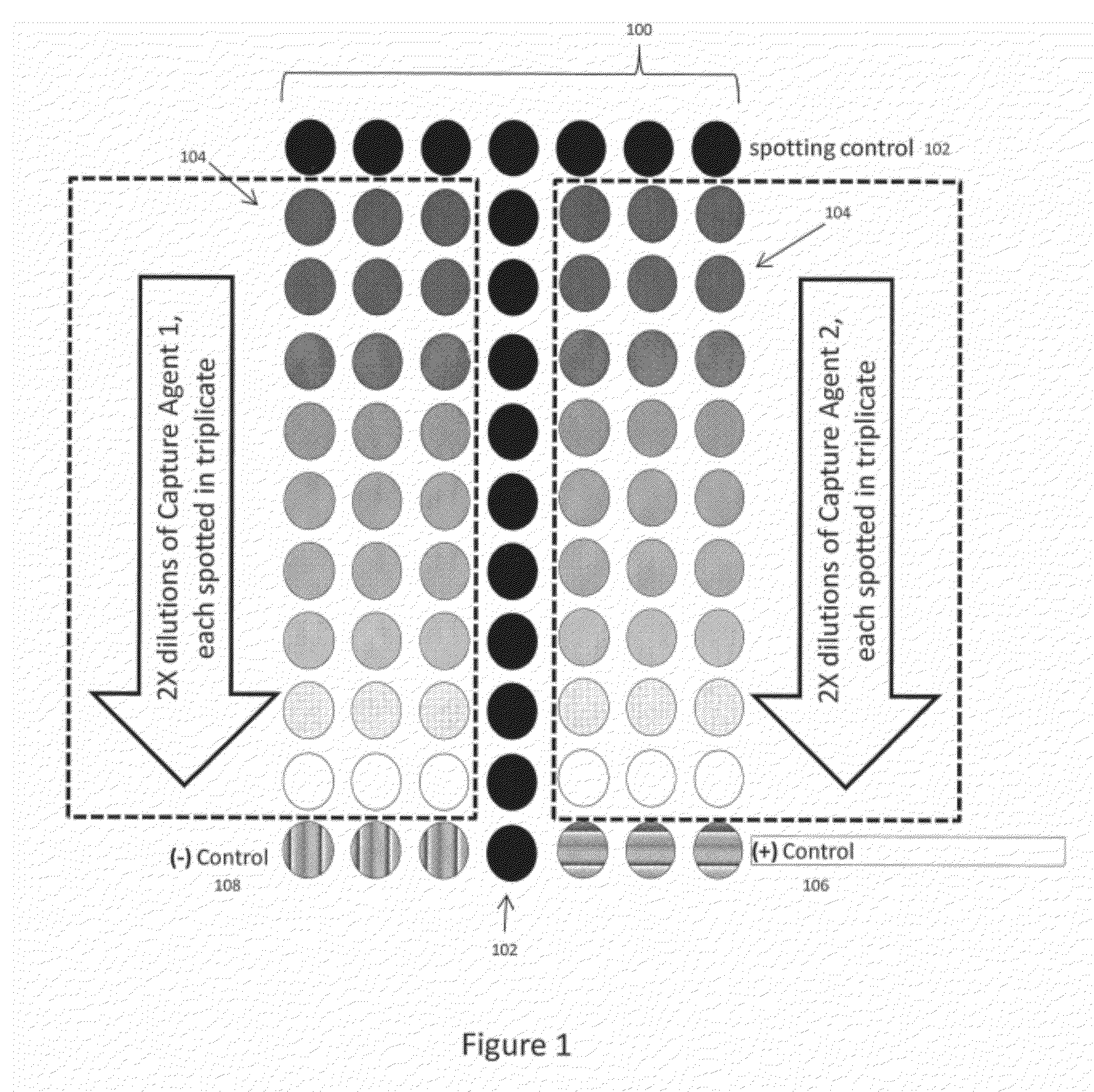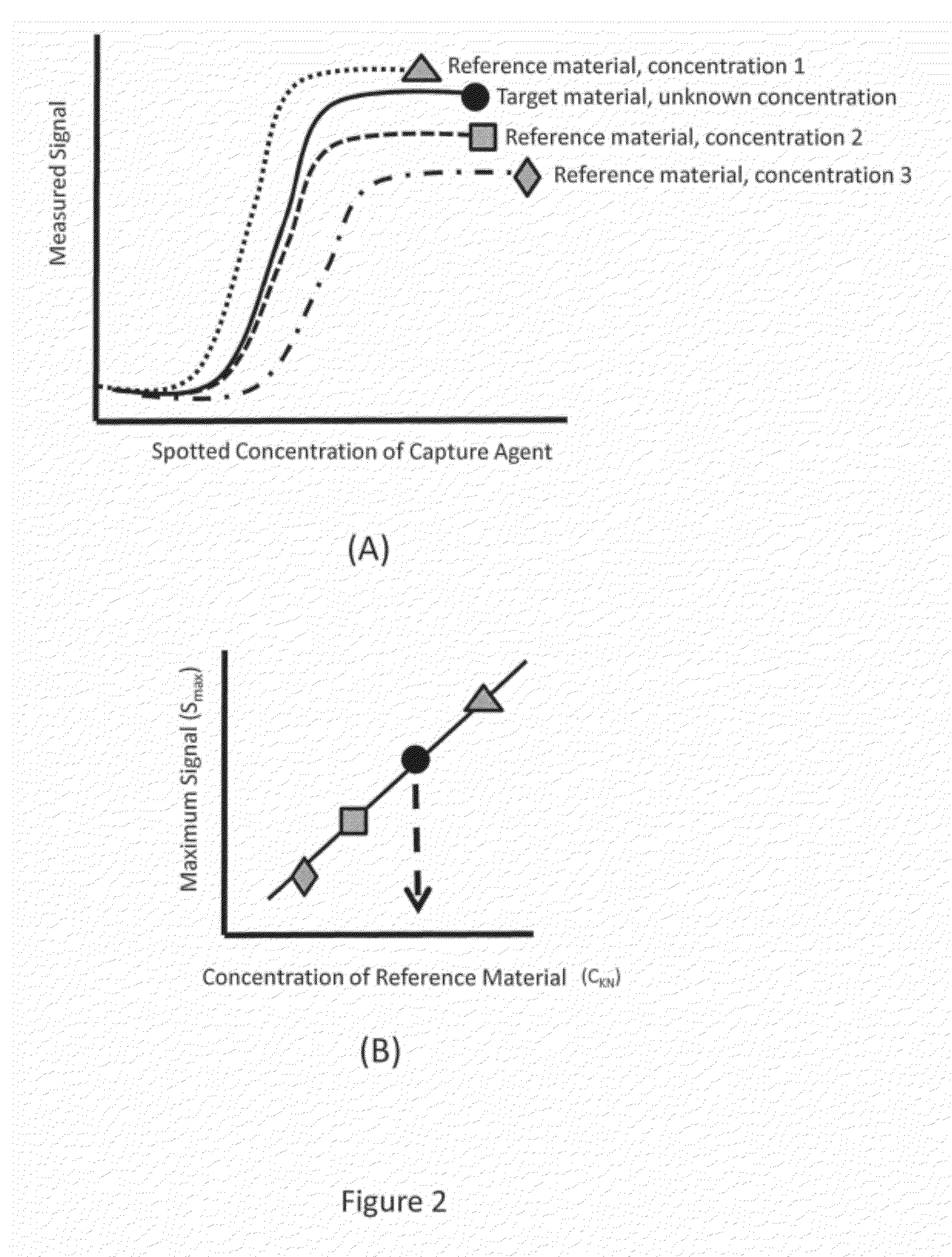Low Density Microarrays for Vaccine Related Protein Quanitification, Potency Determination and Efficacy Evaluation
a low density, vaccine-related technology, applied in the field of low density microarrays for vaccine-related protein quanitification, potency determination and efficacy evaluation, can solve the problems of reducing throughput and efficiency, imposing development and production delays, and time and labor-intensive srid assays
- Summary
- Abstract
- Description
- Claims
- Application Information
AI Technical Summary
Benefits of technology
Problems solved by technology
Method used
Image
Examples
Embodiment Construction
[0027]As mentioned previously, the technology of the present application relates to methods for improved vaccine-related protein quantification, potency determination, and efficacy evaluation using an array-based format in which serial dilutions of an appropriate capture agent are printed. Detectable signals from replicate arrays contacted with different concentrations of a reference material are analyzed, and the maximum signal achieved for each concentration determined from a non-linear regression to the binding curve data is then used to construct a one-time calibration curve; the calibration curve can then be used to quantify a target material after a single concentration of said target material has been contacted with a replicate array and a detectable signal is produced. The technology of the present application provides significant advantages over the current state of the art methods in that a single concentration of target material(s) can be used to obtain the concentration ...
PUM
 Login to View More
Login to View More Abstract
Description
Claims
Application Information
 Login to View More
Login to View More - R&D
- Intellectual Property
- Life Sciences
- Materials
- Tech Scout
- Unparalleled Data Quality
- Higher Quality Content
- 60% Fewer Hallucinations
Browse by: Latest US Patents, China's latest patents, Technical Efficacy Thesaurus, Application Domain, Technology Topic, Popular Technical Reports.
© 2025 PatSnap. All rights reserved.Legal|Privacy policy|Modern Slavery Act Transparency Statement|Sitemap|About US| Contact US: help@patsnap.com



